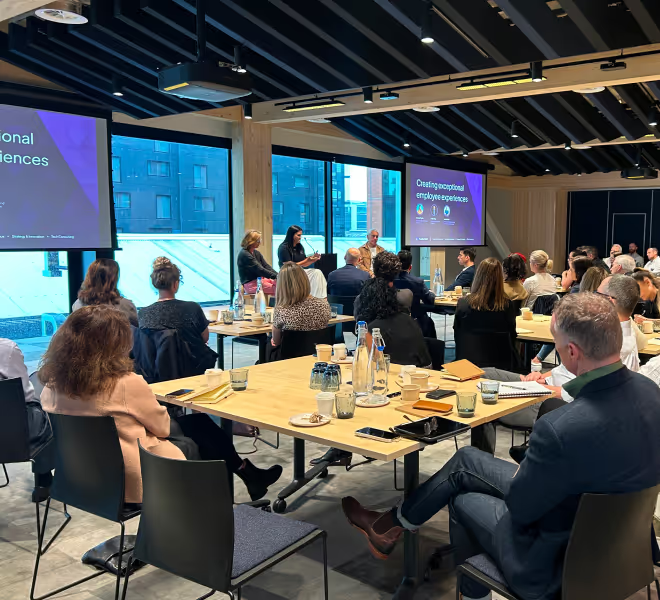Recruiting participants for customer research seems straightforward enough at first glance, right? Just define your research objectives, participant segmentation and incentives, then you’re good to go. However, if it was really that simple, I’m pretty sure many more researchers would be doing it themselves.
Ironically, while working with consultant and in-house user experience teams over the years, I’ve been the one to manage recruitment for customer research. I particularly enjoy the communication and engagement with potential participants leading up to their session although I quickly learned that recruiting can be a complex beast at times.
How to recruit users for customer research
With an abundance of recruitment channels available, it’s difficult to know which one to choose. Do you just pick one and stick with it, or try them all out to find the ones that suit your recruitment needs better than others?
Recruiting participants from in-house customer lists
Recruiting research participants for in-house teams is arguably easier. It typically involves customer lists, organic social media or live intercepts. When I worked at Air New Zealand we were fortunate to have the digital channels in place to engage customers. We could easily invite them to opt in as a contact for future research participation. However, customers who rate your products or services very highly are likely to bring strong feelings and relying mainly on such an engaged panel can create bias in your research.
Recruiting participants who weren’t customers was more of a challenge.
Customer research recruitment agencies
Recruitment agencies, or specialised market research companies, can help you find participants beyond your loyal customers. They screen their active panel on your behalf to recruit participants for customer research who best meet your segmentation requirements. The New Zealand recruitment agencies I’ve worked with all have the same broad approach and remove the hassle of doing the recruit yourself. They’re good at what they do, but come at a price and there’s a lack of visibility on how the recruitment is progressing. In other words, they didn’t always tick every box for me.
Enter Askable
Askable is an innovative platform specifically designed to let UX researchers take control of participant recruitment, without it being a lengthy or complex process. Askable has created a guided approach, with a toolset for doing the job yourself or with support from their team. Askable’s simple three-step framework made it easy for me to streamline the recruitment for Purple Shirt’s customer research. As a result, I’ve quickly developed trust and confidence in the platform.
Here’s a quick guide to using Askable for recruiting customer research participants.
1. Define your audience and participant segmentation
The first step is to clearly define your audience. This will set the tone for your participant segmentation. It’s important to quantify the requirements as much as possible. Something like ‘shops online frequently’ is too broad. You need a more granular approach, such as ‘shops online with a grocery provider at least once a week’.
In addition to targeting with behaviours and demographics, Askable lets you add your own custom screening questions and recommends using no more than 10. This means you can ask the really important questions and not have people passing out during the application process, as they wade through your 50-question marathon! If you do need to find out more, it’s easy to ask additional questions through the participant chat function.
You can set up the screening questions in the platform yourself or the Askable team can do it for you. If you choose the DIY approach, they’ll always walk you through the first one.
2. Select participants for customer research
Once the participants have opted in and answered your questions, it’s time to assess who would be best for your research. Askable includes some nice touches to help with this, including an eligibility percentage based on responses and a voice sample, so you can listen to potential participants introducing themselves.
3. Schedule research participants and automate tasks
Using your own Askable calendar, it’s quick and easy to invite participants to sessions. What’s particularly intuitive is the ability to invite participants in their local time while still seeing the calendar in your time zone. I recently recruited for customer research in the United States and didn’t have to worry about working out the time differences based on their various locations. The cherry on top was having Askable handle the participant incentives.
Other defining features of Askable
There are many other features that put Askable in a league of its own, but I want to specifically call out some of the tooling options for both moderated and unmoderated research. These include Zoom, Lookbook, Loop11 and the recently released Askable Live, which enhances the remote event by delivering an in-browser experience that requires no download. I was also pleased to see the Optimal Workshop staples on hand to assist when conducting unmoderated research.
With so much built in, Askable is pretty much a one-stop-shop!
In summary
Recruiting the right participants for your customer research is critical for getting valuable insights. The Askable platform enables a seamless experience by including:
- Specific demographic filtering and custom screening
- Quick assessment of appropriate participants for your research using eligibility criteria, remote set-up verification, voice sampling and session availability
- The ability to chat with participants via in-built messaging and send automated reminders
- Integration with third party tools
- Participant remuneration handling
- On-hand support whenever you need it.
Aside from this, the team behind the platform deeply understand UX and are passionate about what they do.
If something isn’t working with the way you currently recruit participants, I’d encourage you to review your strategy and channels. Be open to adapting and trying something new.






